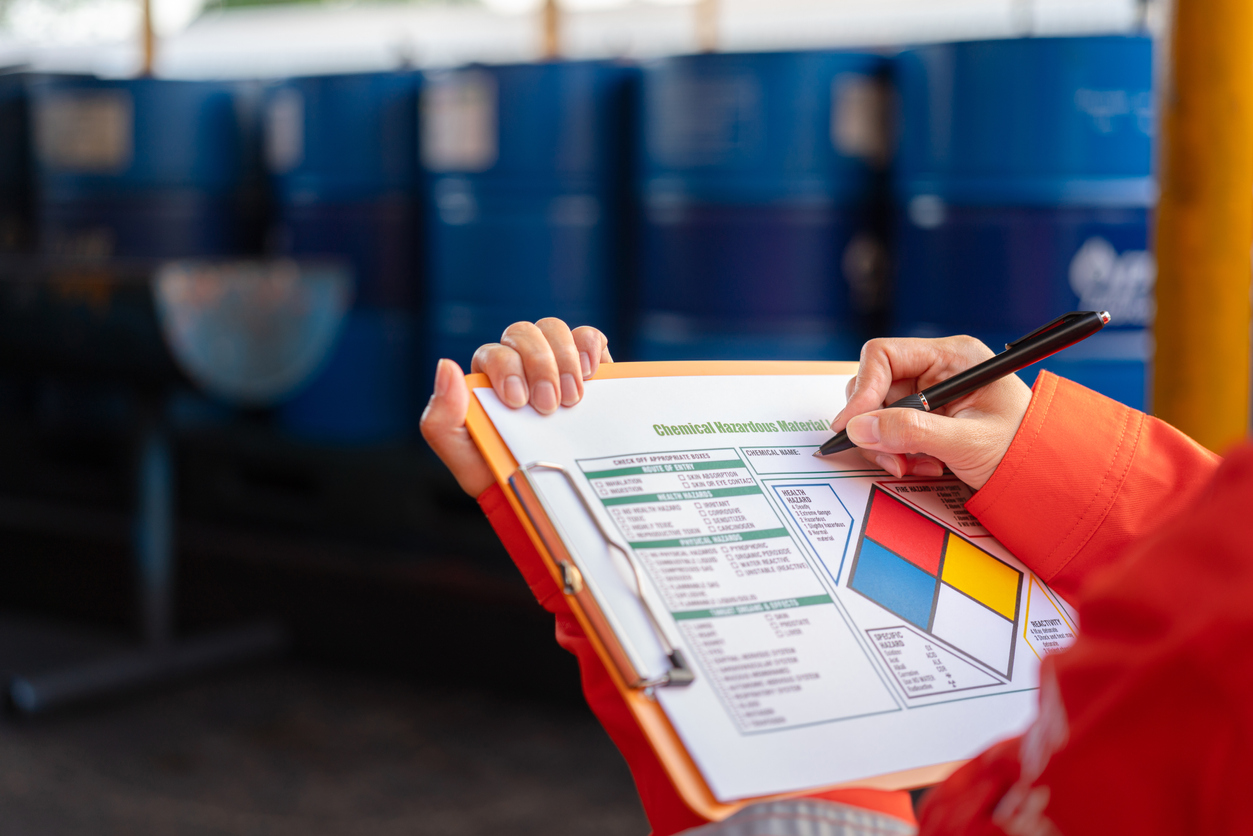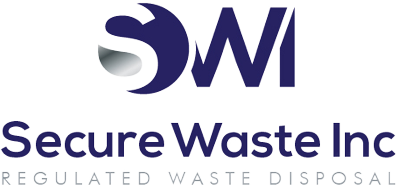Hazardous Waste Manifest | What It Is, How It Works, and What Must Be Listed
Handling hazardous waste requires more than safe containment; it demands strict control, precise documentation, and complete legal compliance at every stage. Central to this process is the Hazardous Waste Manifest. This critical tracking tool follows waste from generation to its final treatment, storage, or disposal. This document is a regulatory mandate that holds generators, transporters, and disposal facilities accountable for proper handling. Each step in this manifest process is designed to safeguard public health and the environment by ensuring complete transparency and traceability.
But what exactly is included in this form? How does the system function in real-world operations? And what specific information would you like to be recorded to remain compliant? This guide deeply explores these questions, clearly understanding the manifest’s purpose.

The Importance Of A Hazardous Waste Manifest In Waste Disposal
The following are some of the reasons why Hazardous Waste Manifests are essential:
Legal Accountability
It serves as a legally binding record, ensuring that all parties involved, like the generator, transporter, and disposal facility, acknowledge responsibility at each stage of the waste’s journey.
Full Traceability
Hazardous Waste Manifest ensures full traceability, allowing regulatory agencies to verify that the waste reaches the correct facility and is treated, stored, or disposed of in compliance with the law.
Prevention of Illegal Dumping
The manifest helps prevent illegal dumping by holding generators accountable and requiring detailed documentation at each transfer point.
Emergency Response Support
It supports emergency response efforts by providing first responders with critical data on the contents in case of spills or accidents during transit.
Verification At Disposal Site
Facilities use the manifest to confirm receipt and condition of the waste, which is vital for maintaining regulatory compliance and operational safety.
How Does The Hazardous Waste Manifest Work?
Here’s how Hazardous Waste Manifests work:
Initiating The Manifest:
The waste generator initiates the Uniform Hazardous Waste Manifest by providing detailed information about the waste type, EPA waste codes, volume, physical state, and hazard classification.
Generator’s Signature And Transfer:
Once the form is accurately filled out, the generator must sign the manifest and hand it off to the initial transporter. This establishes the first link in the chain of custody of hazardous waste removal.
Maintaining Chain Of Custody:
As the waste moves, each transporter involved in the shipment must sign and date the manifest, confirming transfer of responsibility and maintaining an unbroken documentation trail.
Receipt At The Disposal Facility:
The shipment is then delivered to a Treatment, Storage, or Disposal Facility (TSDF), where facility staff verify the contents match the manifest. Any inconsistencies are noted directly on the form, ensuring transparency in reporting.
Closing The Documentation Loop:
After validation, the TSDF signs the manifest and sends the final signed copy back to the generator, closing the loop and confirming that the waste has reached a certified and compliant endpoint.
Retention Of Completed Manifest:
This returned copy, also called the “completed manifest,” must be retained by the generator for at least three years. It serves as an official compliance record in case of inspections or audits.
Introduction Of The E-Manifest System:
The EPA launched the e-Manifest system in 2018 to improve accuracy and reduce processing time. This system allows generators, transporters, and disposal facilities to manage manifests electronically through the EPA’s RCRAInfo platform.
| Note: RCRAInfo is the U.S. Environmental Protection Agency’s (EPA) comprehensive information system that supports the Resource Conservation and Recovery Act (RCRA) of 1976 and the Hazardous and Solid Waste Amendments (HSWA) of 1984. |
Digital Tracking And Real-Time Updates:
In the electronic system, digital signatures replace paper ones, and all data is submitted in real-time, enhancing visibility across the entire health care waste management process.
Exception Reporting Requirement:
Suppose a generator does not receive the completed manifest within 45 days of shipment. In that case, they must file an Exception Report with the EPA, flagging a potential disruption in the waste handling chain.

What Information Must Be Included On A Hazardous Waste Manifest?
Now that you know what a Hazardous Waste Manifest is and how it works, it’s time to learn about the information that must be included in this document. Take a look:
- Generator Information: The manifest must list the waste generator’s full name, address, and EPA identification number. This identifies the source of the hazardous waste and ensures accountability under the U.S. Environmental Protection Agency (EPA) regulations.
- Transporter Details: All transporters moving the waste must provide their names, addresses, and EPA ID numbers. Each transporter’s information verifies the chain of custody during transit and aligns with the U.S. Department of Transportation (DOT) standards.
- Designated Facility Information: The receiving treatment, storage, or disposal facility’s (TSDF) name, address, and EPA ID number must be clearly stated.
- Description of Hazardous Waste: A detailed waste description, including the proper shipping name, hazard class, UN/NA identification number, packing group, and quantity, is mandatory.
- Waste Codes: All applicable EPA hazardous waste codes must be listed to categorize the waste accurately.
- Manifest Tracking Number: Each manifest is assigned a different tracking number, essential for tracking and record-keeping throughout the medical waste management process.
- Packaging Information: The type and number of containers and their size must be documented.
- Certification Statements: The generator must sign a certification confirming that the waste is classified correctly and packaged according to regulations.
- Emergency Contact Information: A phone number for 24-hour emergency contact must be included, allowing immediate response if incidents occur during transport.
- Signatures and Dates: The manifest requires signatures and dates from the generator, each transporter, and the receiving facility.
- Special Handling Instructions: Any specific instructions for handling, treatment, or disposal must be noted to ensure safe and compliant management.
- Discrepancy Statement: There should be space to note any discrepancies between the waste received and the waste shipped, helping to identify and resolve issues promptly.
Common Mistakes To Avoid When Filling Out A Hazardous Waste Manifest
- Using incorrect EPA ID numbers for the generator or transporter can lead to regulatory issues and delays.
- Misclassifying waste by selecting the wrong DOT shipping name or hazard code results in non-compliance.
- Recording inaccurate quantities or using incorrect units may cause legal and logistical problems.
- Signing the manifest prematurely or without verifying details can invalidate the form and lead to liability.
- Sending waste to an unpermitted facility can result in severe penalties and improper disposal.
- Failing to distribute and retain the correct copies disrupts tracking and violates EPA recordkeeping rules.
- Committing E-Manifest submission mistakes, such as entering incorrect data, failing to properly sign electronically, or submitting incomplete information, can delay waste tracking and trigger compliance violations.
What Happens If A Hazardous Waste Manifest Is Incomplete Or Incorrect?
An incomplete or incorrect Hazardous Waste Manifest can lead to serious regulatory and operational consequences. The U.S. Environmental Protection Agency (EPA) may impose substantial fines for each violation, meaning the responsible facility must correct the errors immediately. These discrepancies often delay the transportation or disposal process, increasing onsite storage time and non-compliance risk. Additionally, when manifest details, such as generator ID numbers, waste codes, or quantities, are inaccurate, proper tracking becomes compromised. This can result in mismanagement, environmental harm, and legal liability.
Conclusion
The true significance of the Hazardous Waste Manifest lies in the chain of responsibility it enforces across every stage of waste handling. More than just a form, it functions as a critical system that ensures each party is fully accountable. When completed accurately and used consistently, it becomes a powerful instrument that fosters a culture of transparency, diligence, and environmental responsibility throughout the hazardous waste management process.
Now that you have a more comprehensive understanding of the medical waste tracking manifest, don’t hesitate to contact Secure Waste.
We provide reliable, compliant, eco-friendly medical waste disposal solutions for your facility’s needs. We have expertise in biomedical, hazardous waste, and Sharps container disposal. In addition, we provide customized waste management plans, including secure collection and transport, and sustainable disposal practices.
Contact us today for a FREE Waste Assessment, or request a quote online!

Expert Medical Waste Management: With over 25 years of industry experience, Secure Waste is a trusted local leader in hazardous and biohazardous waste disposal across Maryland, Virginia, and Washington, D.C. Specializing in medical waste management, sharps needle disposal, and biohazard waste removal, the company ensures full compliance with federal, state, and local regulations while prioritizing environmental sustainability.
The company also offers additional services, including secure document shredding and sharps container sales, providing comprehensive solutions for healthcare facilities and businesses. Our cost-effective services help clients maintain regulatory compliance without unexpected costs.
With a commitment to customer satisfaction, Secure Waste offers tailored waste management plans that align with industry best practices. Their team of experts provides reliable, timely, and compliant services, making them the preferred choice for medical waste disposal. For a free waste quote or more information, visit www.securewaste.net






